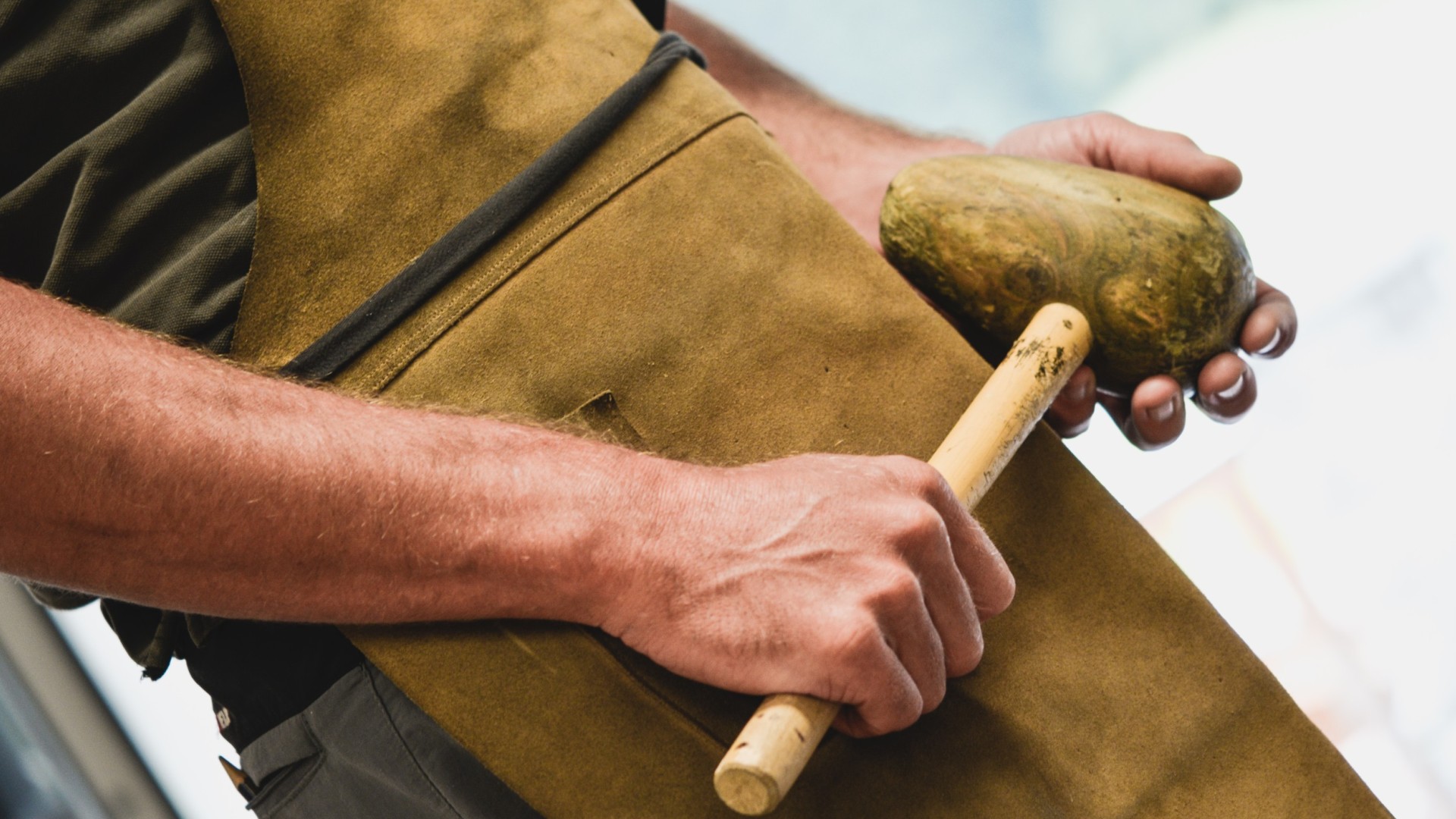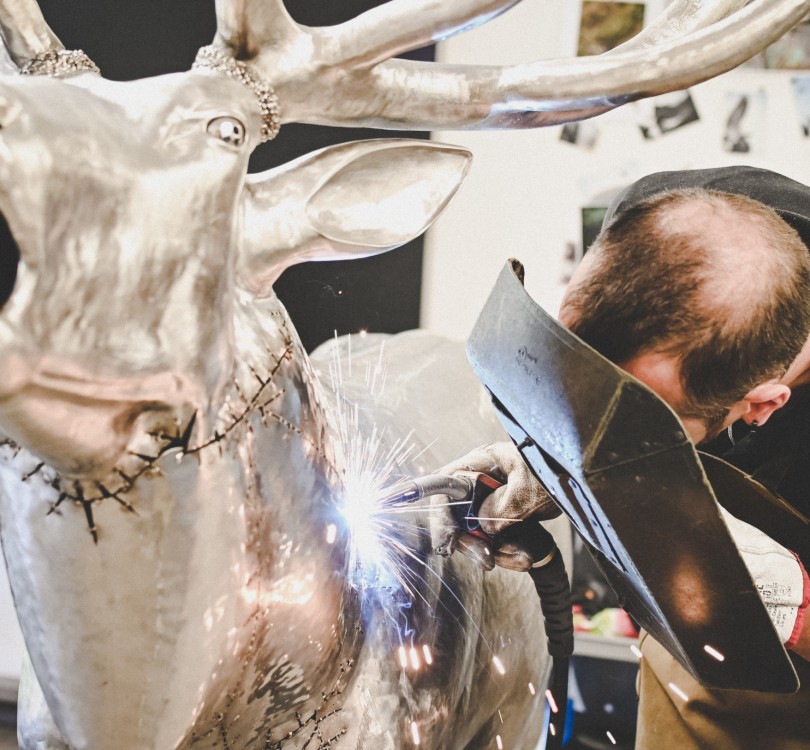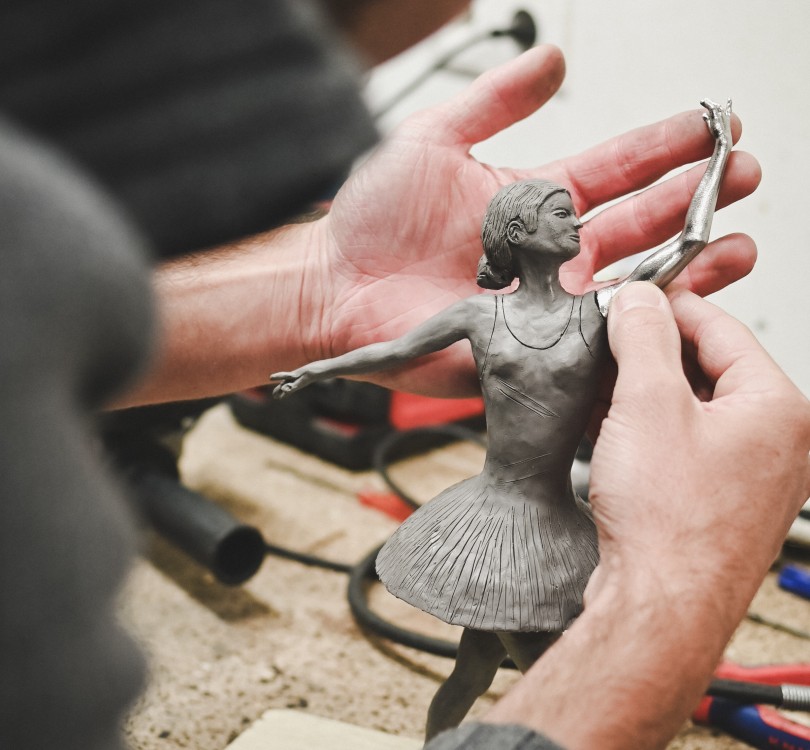Art is freedom.
It may mean something different for everyone, but it is the right thing for everyone.
The artist
Friedrich Moosmair
From coachbuilder to craftsman
Friedrich Moosmair was born in Meran in 1986 and grew up in St. Leonhard in Passeier, in the hamlet of Gomion. He initially spent 15 years working as a trained coachbuilder, eventually switching to the hospitality industry where he worked as a sauna master and a hiking and biking guide in a nearby hotel. Here he pursued his love for nature and, in his spare time, created his first sculptures of stainless steel – initially for his own garden. Then came Covid.
Covid as an inspiration
The pandemic could not stop Friedrich, however – on the contrary, he used this setback as an inspiration. The craftsmanship that his parents had passed on to him, which he spent years perfecting as a coachbuilder, was quickly turned into his daily bread: Friedrich set up his own business. His first work was a magnificent eagle of stainless steel, not by chance a symbol of freedom, that eventually found its place – in the Metal Art logo.
Circumstances and surroundings may have provided the impetus for his switch from coachbuilder to craftsman, but it was more the legacy of his parents, his own artistic creativity and the freedom that comes from forming entirely new figures that underlie his metamorphosis.

The versatility
of stainless steel
“My craft is for me cathartic. It permits me free rein for my thoughts, allowing me to give them form – not on paper, but in stainless steel."
Friedrich Moosmair sees his craft as much more than just shaping stainless steel, hammering metal into a specific form. Rather, it is a way of bringing ideas to life, a homage to his homeland, an evocation of feelings – both in himself and in the viewer.

Feelings
become visible
While the process that underlies his stainless steel artworks is technical, precise and is marked by its craftsmanship, the thought behind them is everything but: every one of Friedrich’s sculptures contains passion, emotion and nature – a little of Friedrich himself, in fact. And so the artist from the Passeier Valley combines the technical and artistic aspects of his craft, giving it his very own creative touch.

Ideas for
the future
Stainless steel, wood and stone are the materials that he works with: animals, people, abstract objects, and accessories and jewellery are the forms that he creates. Friedrich always has a cosmopolitan outlook, which is why he is also happy to hear new ideas from customers, or to take on abstract commissions or jobs that will push him to his limits and beyond. Because, while his sculptures will remain unchanged for decades, Friedrich always wishes to develop as an artist.


It all starts
with inspiration
It all starts
with inspiration
Step by step to create a work of art
Friedrich Moosmair usually gets the ideas for his sculptures amid the mountains of the Passeier Valley, as there is nothing as inspiring as wild, unspoilt nature. Here, thoughts can run free, the mind is unburdened – and the imagination can take flight.
The details
Once he has decided on a subject for his sculpture, Friedrich sets about studying it, right down to the smallest detail. He researches the characteristics of the animal or object to familiarise himself with them. Then, taking a photo or sketch as a model, he sets about modelling.




The model
Friedrich (almost) always makes a first model out of clay or foam, which allows him to mould every detail as it should look in stainless steel – in its original size. This step is necessary because foam and modelling clay leave more room for correction, allowing him to precisely determine every shape.
The individual parts
He removes the model’s individual parts, then, using a steel net to copy the shape, mills them into wooden blocks as negatives. He then places thin sheets of stainless steel onto these wooden blocks and carefully taps them into the correct shape using a hammer. Wood is used because it is quite soft and thus ensures that the stainless steel will not be damaged by the hammering.

The attention to detail in his artworks …

becomes more obvious with every hammer blow.
The sculpture
Piece by piece, Friedrich transfers the moulded model onto stainless steel sheet. He temporarily joins the parts around the model with spot welds so that he can always keep the finished form in view. Once all the individual parts have been made, this temporary sculpture is again taken apart, the model is removed and the sculpture is finally welded together, supported by a framework. Finally, the weld seams are sanded smooth to make them invisible.




The artwork
The result is a sculpture, painstakingly hammered with incredible skill by hand from stainless steel. For a large sculpture the entire process can take up to 1,000 working hours. All good things need time!
Adaptability
Friedrich does not only use this approach, however – he adapts the method to the intended sculpture. For example, he pre-modelled the “Abstract woman” on a smaller scale, then projected it onto the wall, enlarging it with light, before modelling it from stainless steel. In order to detail the “Ballerina”, Friedrich made the work from solid material despite its small size. The inside is therefore not hollow; the sculpture is thus much heavier than its size would suggest.

